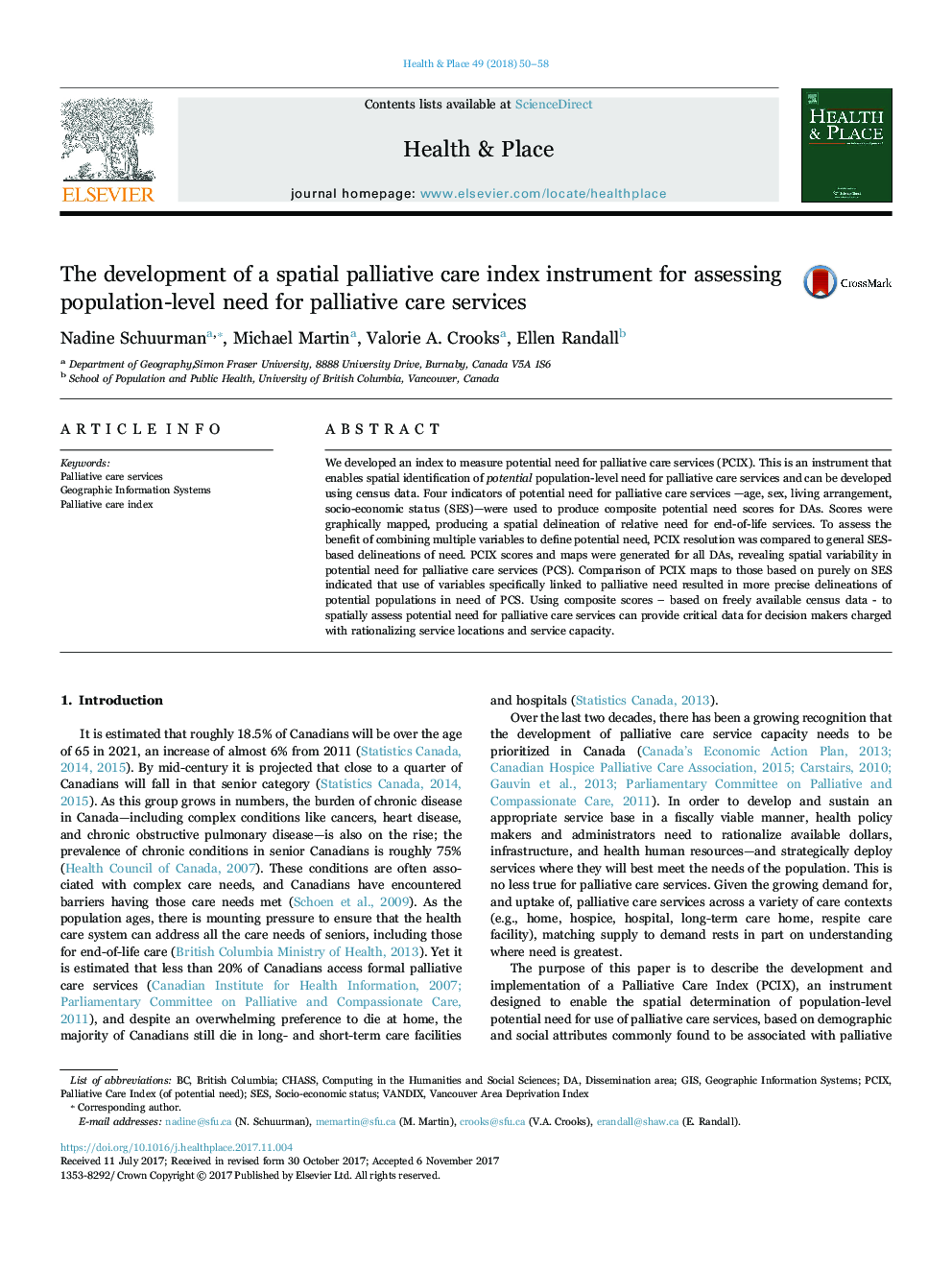| Article ID | Journal | Published Year | Pages | File Type |
|---|---|---|---|---|
| 7457073 | Health & Place | 2018 | 9 Pages |
Abstract
We developed an index to measure potential need for palliative care services (PCIX). This is an instrument that enables spatial identification of potential population-level need for palliative care services and can be developed using census data. Four indicators of potential need for palliative care services -age, sex, living arrangement, socio-economic status (SES)-were used to produce composite potential need scores for DAs. Scores were graphically mapped, producing a spatial delineation of relative need for end-of-life services. To assess the benefit of combining multiple variables to define potential need, PCIX resolution was compared to general SES-based delineations of need. PCIX scores and maps were generated for all DAs, revealing spatial variability in potential need for palliative care services (PCS). Comparison of PCIX maps to those based on purely on SES indicated that use of variables specifically linked to palliative need resulted in more precise delineations of potential populations in need of PCS. Using composite scores - based on freely available census data - to spatially assess potential need for palliative care services can provide critical data for decision makers charged with rationalizing service locations and service capacity.
Keywords
Related Topics
Health Sciences
Medicine and Dentistry
Public Health and Health Policy
Authors
Nadine Schuurman, Michael Martin, Valorie A. Crooks, Ellen Randall,
